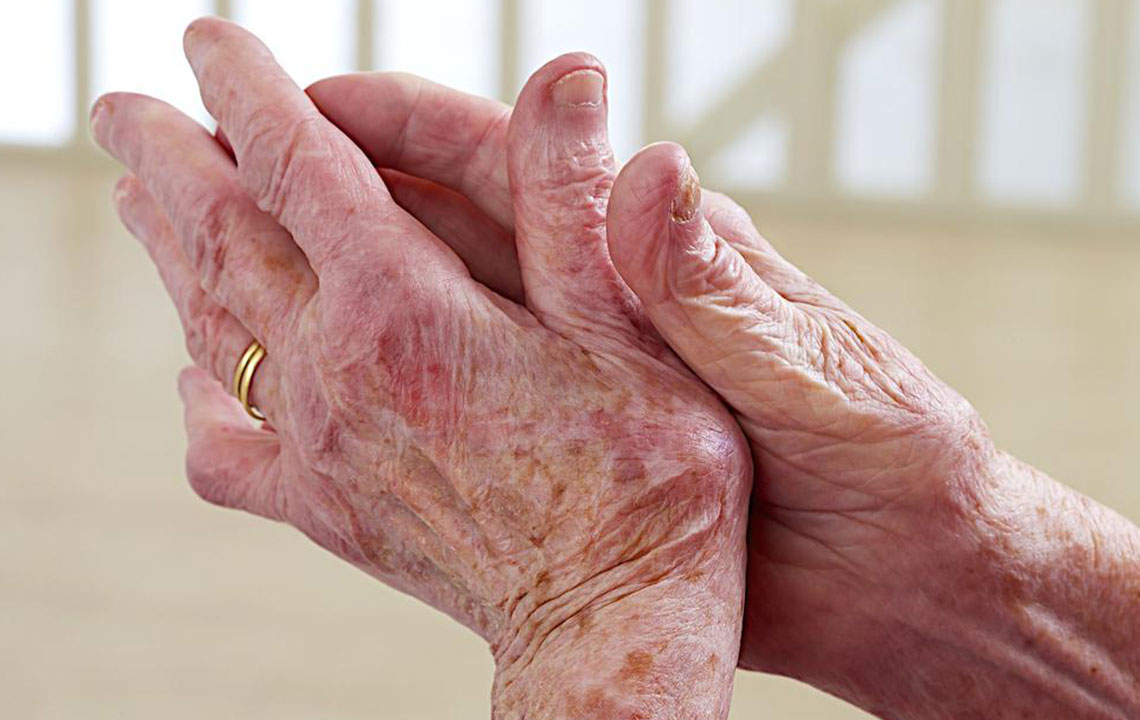Comprehensive Guide to Psoriatic Arthritis: Symptoms, Causes, and Effective Treatment Strategies
This comprehensive guide explores psoriatic arthritis, detailing its causes, symptoms, diagnosis, and a wide range of treatment options. Learn how early intervention and modern therapies can help manage this chronic autoimmune disease effectively. The article emphasizes the importance of personalized treatment plans and lifestyle changes to improve daily life and prevent complications, providing valuable insights for patients and healthcare professionals alike.

Comprehensive Guide to Psoriatic Arthritis: Symptoms, Causes, and Effective Treatment Strategies
Psoriatic arthritis (PsA) is a complex, chronic autoimmune condition that primarily affects the skin and joints, leading to inflammation, pain, and deformity over time. This disease is closely associated with psoriasis, a skin disorder characterized by red, scaly patches, but PsA extends beyond skin symptoms to involve the musculoskeletal system. Understanding the intricacies of psoriatic arthritis is crucial for early diagnosis, effective management, and improving the quality of life for those affected. In this detailed guide, we will explore the causes, symptoms, risk factors, and the latest treatment options available for psoriatic arthritis.
Psoriatic arthritis is a form of inflammatory arthritis associated with psoriasis, affecting roughly 20% of individuals with psoriasis. The condition commonly begins after the age of 40, although it can occur in younger individuals as well, and affects men and women equally. In most cases, the skin manifestations of psoriasis are noticed before the joint symptoms emerge—which happens in approximately 80% of patients—highlighting the importance of skin health as a potential early warning sign.
The precise causes of psoriatic arthritis remain elusive. However, researchers believe that it results from a combination of genetic predisposition, environmental triggers, and immune system dysregulation. Specific genes have been linked to an increased risk, especially if there is a family history of psoriasis or rheumatoid diseases. Environmental factors such as infections, physical injuries, stress, or certain medications may trigger or exacerbate the condition in genetically susceptible individuals.
Genetic predisposition plays a vital role in the development of psoriatic arthritis. If your close relatives have psoriasis or psoriatic arthritis, your risk significantly increases. Moreover, lifestyle choices, such as smoking, obesity, and lack of regular exercise, can influence the severity and progression of the disease, emphasizing the importance of healthy habits in disease management.
Common Symptoms and Signs of Psoriatic Arthritis
Identifying psoriatic arthritis early is essential to prevent irreversible joint damage and improve long-term outcomes. The symptoms can vary widely among individuals, affecting different parts of the body and manifesting in distinct ways. The most common symptoms include:
Joint Swelling and Pain: These usually involve the fingers, toes, knees, ankles, and wrists. Swelling can cause a sausage-like appearance in fingers and toes, known as dactylitis, which is a hallmark of psoriatic arthritis.
Stiffness and Reduced Mobility: Morning stiffness lasting more than an hour is typical, along with difficulty moving affected joints during daily activities.
Inflammation of the Spine: PsA can cause spondylitis, leading to back pain, stiffness, and reduced flexibility in the neck and back.
Enthesitis: Inflammation occurs at sites where tendons or ligaments insert into bones, particularly in the heels, elbows, and knees.
Skin and Nail Changes: Flare-ups of psoriasis often accompany joint symptoms, with plaque formation, cracked or pitted nails, and sometimes, scalp inflammation.
Extra-Articular Manifestations: Some individuals develop inflammation in organs such as the eyes, resulting in uveitis, or in the cardiovascular system, affecting the aorta and lungs.
Fatigue and Malaise: Persistent tiredness and a general feeling of illness are common among patients.
Additional Symptoms and Associated Conditions
Beyond joint and skin symptoms, psoriatic arthritis may influence other parts of the body. Some patients experience inflammation of the aorta (aortitis), lung tissue (interstitial lung disease), and eye structures, leading to conditions such as conjunctivitis or uveitis. Fatigue and malaise are also prevalent, often complicating daily life. Furthermore, many patients develop hypersensitivities and allergies to foods, medications, or insect bites, which can trigger or worsen symptoms.
Diagnosing Psoriatic Arthritis
Diagnosing psoriatic arthritis involves a comprehensive approach, combining medical history, physical examinations, blood tests, and imaging studies. Since symptoms often mimic other forms of arthritis, such as rheumatoid arthritis, precise diagnosis is crucial for appropriate treatment. Rheumatologists evaluate joint swelling, skin conditions, and family history, and may order blood tests to rule out other diseases. Imaging techniques like X-rays, MRI, or ultrasound help visualize joint damage, inflammation, or enthesitis, aiding early diagnosis and disease assessment.
Current Treatment Options for Psoriatic Arthritis
Although there is currently no cure for psoriatic arthritis, various treatment strategies focus on controlling symptoms, preventing joint damage, and improving quality of life. The choice of therapy depends on disease severity, the extent of joint and skin involvement, and individual patient factors.
The primary goals of treatment include pain relief, reduction of inflammation, prevention of joint deformity, and improved physical function. A combination of medications, physical therapy, lifestyle changes, and sometimes surgical interventions are employed to manage the disease effectively.
Medications used in psoriatic arthritis treatment include:
NSAIDs (Non-Steroidal Anti-Inflammatory Drugs): These drugs are typically the first-line treatment to reduce pain, swelling, and stiffness. Over-the-counter options like ibuprofen (Advil, Motrin) and naproxen (Aleve) are commonly used for mild symptoms. More potent NSAIDs require prescriptions and are used in moderate to severe cases. Despite their effectiveness, NSAIDs carry risks such as gastrointestinal issues, cardiovascular problems, kidney and liver damage, making regular monitoring essential.
DMARDs (Disease-Modifying Anti-Rheumatic Drugs): These medications slow disease progression by modulating the immune system, aiming to prevent permanent joint and tissue damage. Traditional DMARDs include methotrexate, sulfasalazine, and leflunomide. Biologic agents, such as TNF inhibitors (adalimumab, etanercept), IL-17 inhibitors (secukinumab), and IL-12/23 inhibitors (ustekinumab), target specific immune pathways involved in psoriatic inflammation. Side effects can include increased infection risk, liver toxicity, and blood cell suppression, necessitating careful monitoring.
In addition to medicines, physical therapy and exercise are vital for maintaining joint flexibility and muscle strength. Lifestyle modifications like maintaining a healthy weight, quitting smoking, and reducing alcohol intake can significantly lessen disease severity. In some cases, surgical procedures, such as joint replacement, may be necessary for advanced joint damage.
Emerging Treatments and Future Perspectives
Research into the pathogenesis of psoriatic arthritis continues to identify new therapeutic targets. Innovative biologics and small-molecule drugs are under development to improve efficacy and reduce side effects. Personalized medicine approaches, including genetic profiling, aim to tailor treatments to individual patients, optimizing outcomes. Moreover, lifestyle interventions, mental health support, and integrative therapies like acupuncture are gaining recognition as complementary strategies in comprehensive disease management.
Living with Psoriatic Arthritis
Managing psoriatic arthritis requires a multidisciplinary approach involving rheumatologists, dermatologists, physical therapists, and mental health professionals. Education about the disease helps patients understand their condition, adhere to treatments, and make informed lifestyle choices. Regular monitoring and early intervention are crucial to prevent joint deformities and improve functional independence.
Though chronic, psoriatic arthritis can be effectively managed with current medical advances and lifestyle adjustments. Patients are encouraged to maintain a healthy lifestyle, stay active, and seek prompt medical attention for new symptoms or worsening conditions. With ongoing research and innovative therapies, the outlook for individuals living with psoriatic arthritis is continually improving, offering hope for better disease control and enhanced quality of life.





